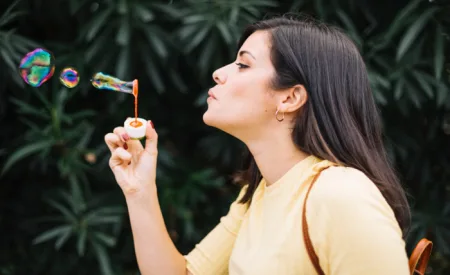Classical guitar music can calm any room, from Beethoven to modern fingerstyle favorites. To make beautiful music, you always need to improve classical guitar techniques. You can now transform your technique by using online tools and resources like classicalguitarshed.com.
Let’s explore some practical approaches and technique tips.
What is a Classical Guitar?
A classical guitar is an acoustic string instrument made of wood, nylon, or metal strings. The soundboard and resonant cavity of the guitar amplify the sound of the plucked string.
As with gut strings, nylon strings also have a much lower tension than steel strings. Classical guitars have six strings, though some guitars have seven or more strings. Typically, silver-plated copper is used to wind the three lower strings.
The History
Classical guitars derive from the Spanish vihuela of the 15th and 16th centuries. Those instruments evolved into 17th and 18th-century baroque guitars. By the mid-19th century, early forms of the modern guitar.
The modern classical guitar was developed in the late 19th century in Spain. It has a wider neck and a flatter fretboard than the steel-string acoustic guitar.
This is also played with a different technique by many guitarists. Classical guitarists use their fingernails to pluck the strings. Other steel-string guitarists use their fingertips to open strings.
Classical guitars are used to play a wide variety of music, including classical, flamenco, and folk music. They are also used in the jazz genre and popular music. Some famous classical guitarists include Andrés Segovia, Julian Bream, and John Williams.
The Benefits of Playing the Classical Guitar
Playing guitar offers numerous benefits you don’t want to miss out on. Here are a few important ones:
- Improved coordination. Playing guitar requires coordination between hands and fingers. As you practice, your hand-eye coordination and fine motor skills will improve, possibly benefiting areas such as sports, driving, and surgery.
- Reduced stress. Playing guitar is a relaxing activity that can also reduce stress levels.
- Improved mood. Guitar playing fosters a sense of accomplishment and satisfaction.
- Increased social skills. Learning to play classical guitar opens up opportunities to meet new people and make friends.
- Personal fulfillment. Playing the guitar gives a sense of enjoyment. It also boosts self-confidence and encourages creative expression.
- Improved memory. The process of memorizing chords, notes, and rhythms exercises the brain’s memory.
- Increased creativity. Playing the guitar allows for experimentation with unique rhythms, melodies, and sounds.
- Improved self-esteem. Being able to play music that gives joy and happiness is a confidence booster.
Start learning this beautiful instrument and unlock its full benefits with effort.
How to Become a Classical Guitarist
Here are tips on how to practice and start playing the guitar effectively:
Maintain proper hand positioning
Establishing a correct hand posture lays the foundation for efficient movement. When playing the guitar, it’s important to maintain a relaxed yet firm grip on the neck. This same hand position allows your fingers to move easily across the strings. And while helping you avoid tension and injury.
Correct hand positioning supports precise finger placement. This enables you to execute complex passages accurately and with ease. So, remember to practice your right and left-hand fingers for an improved playing experience!
Play with a metronome
To boost your sense of rhythm and precision while playing, try using a metronome. Begin by playing easy scales and exercises at a very slow tempo and pace. This is while ensuring precise alignment of each note with the metronome’s beat.
As you become more comfortable, gradually increase the tempo while maintaining equal measures of accuracy. Practicing with hand fingers and a metronome improves your timing and rhythmic accuracy and synchronizes your playing with other musicians.
Develop finger independence
Work on exercises that isolate each finger and require independent movement. Practice finger patterns, emphasizing the clean and distinct articulation of each note.
Gradually increase the difficulty by incorporating more complex patterns and variations. By training all your fingers to move independently, you will have better control over your playing.
Maintain a consistent and structured practice routine
Set aside dedicated practice time each day to work on specific technical exercises and sight-reading and sheet music. Break down challenging passages into smaller sections and practice them systematically. Vary your practice routine to include different aspects of technique, such as scales and finger exercises.
Seek guidance
Enroll in formal lessons with a qualified teacher who can provide personalized instruction. You ask for feedback and guide you through your musical journey. Participate in masterclasses, workshops, and summer programs. This is to gain exposure to different teaching styles and learn from guitarists.
Engage in collaborations with fellow musicians to enhance techniques such as rest stroke and free stroke.
Wrap-Up
If you’re searching for a new hobby that is both rewarding and enjoyable, learning to play the classical guitar is a great option. Learning the guitar takes effort.
Don’t be discouraged if you don’t see results immediately. Just keep practicing to improve your classical guitar techniqu


